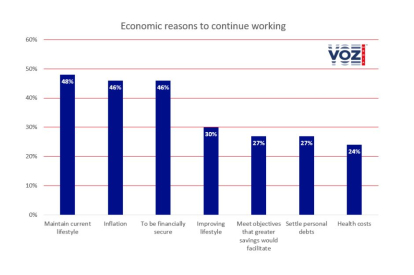Forty-three percent of professionals fear they will continue working past age 67 due to inflation
According to a report, six out of ten citizens have less than $500,000 saved to support their living costs in retirement.

(pxhere)
Almost half of the citizens (43%) stated that they will need to continue working beyond retirement age due to the poor economic situation. One of the primary factors is inflation, which stood at 6.5% at the end of 2022 and has led to a rise in the price of every day goods for individuals. Another factor is the constant rise in interest rates, which will continue to increase, as stated by Federal Reserve (Fed) Chairman Jerome Powell.
According to a report by the insurance and investment company Voya Financial, among the 43% who are urged to stay in their jobs for economic reasons, 48% said they would have to continue in order to maintain their standard of living. Forty-six percent blamed inflation for having to continue working past the age of 67, the minimum retirement age at which workers receive the full social benefits to which they are entitled.

plantilla foto - 2023-03-09T173947.848
On the other hand, the report highlighted that six out of 10 citizens (60%) stated that they have less than $500,000 saved or in investments, which would make it difficult for them to continue their standard of living during retirement or to help their family members. In addition, one-third said they had less than $100,000. The effect of this data is that only 22% of all citizens are confident that they have what they need to have a comfortable life after their professional retirement.
Voya Cares Employment Extenders - Voz Media by VozMedia on Scribd
Negative consequences for young people
In projections for the year 2030, the Bureau of Labor Statistics (BLS) predicted that the percentage of workers aged 75 and older could grow by 96.5% over 2020. This would have a direct negative effect on new entrants to the labor market in the event that not enough new jobs are created to account for the aging workforce.
On the other hand, the BLS forecasts that the 25-54 and 55-74 age ranges will see slight growth (5.6% and 7.7%, respectively). On the other hand, the working population between 16 and 24 years of age is projected to decline by 7.5%.












